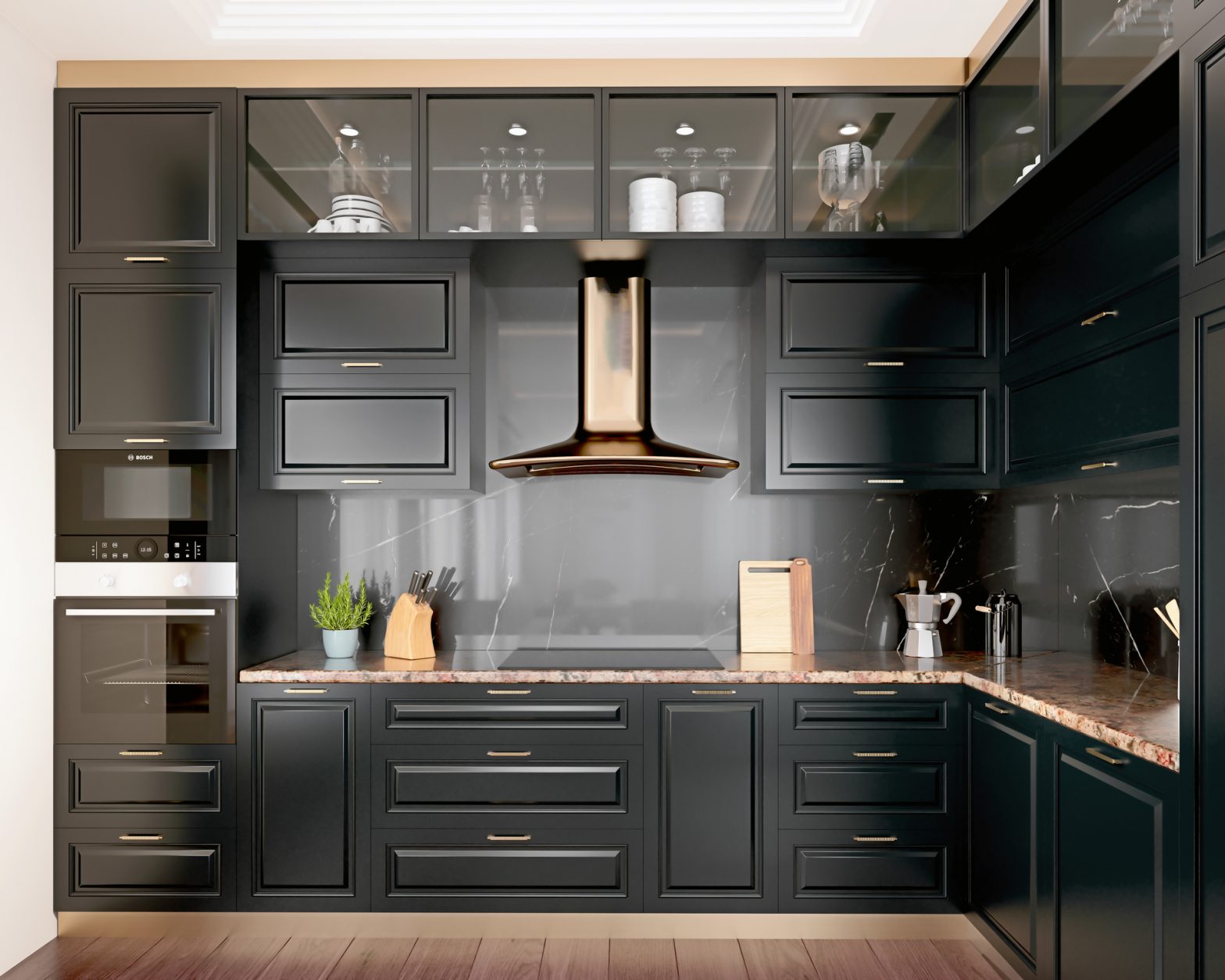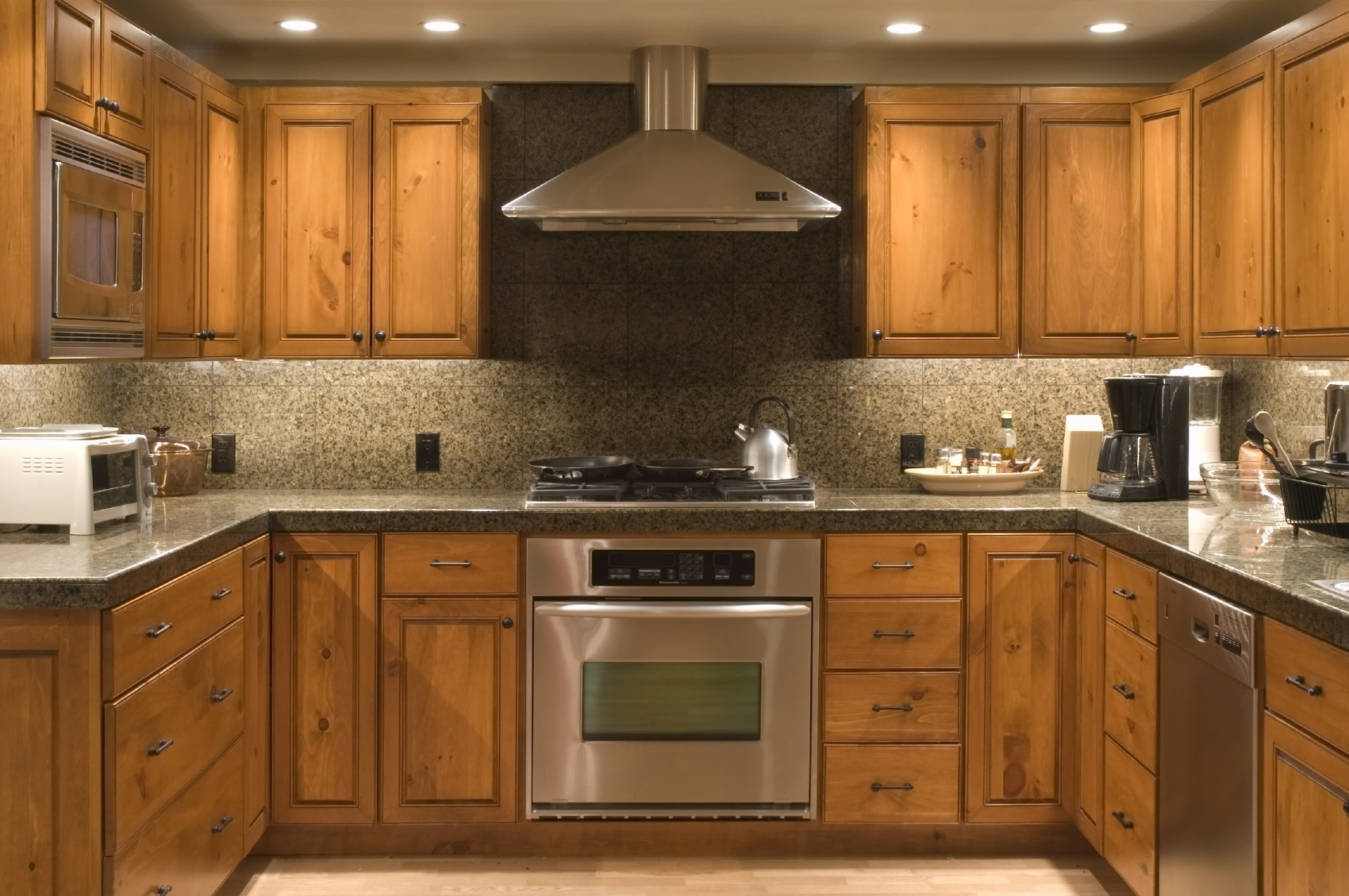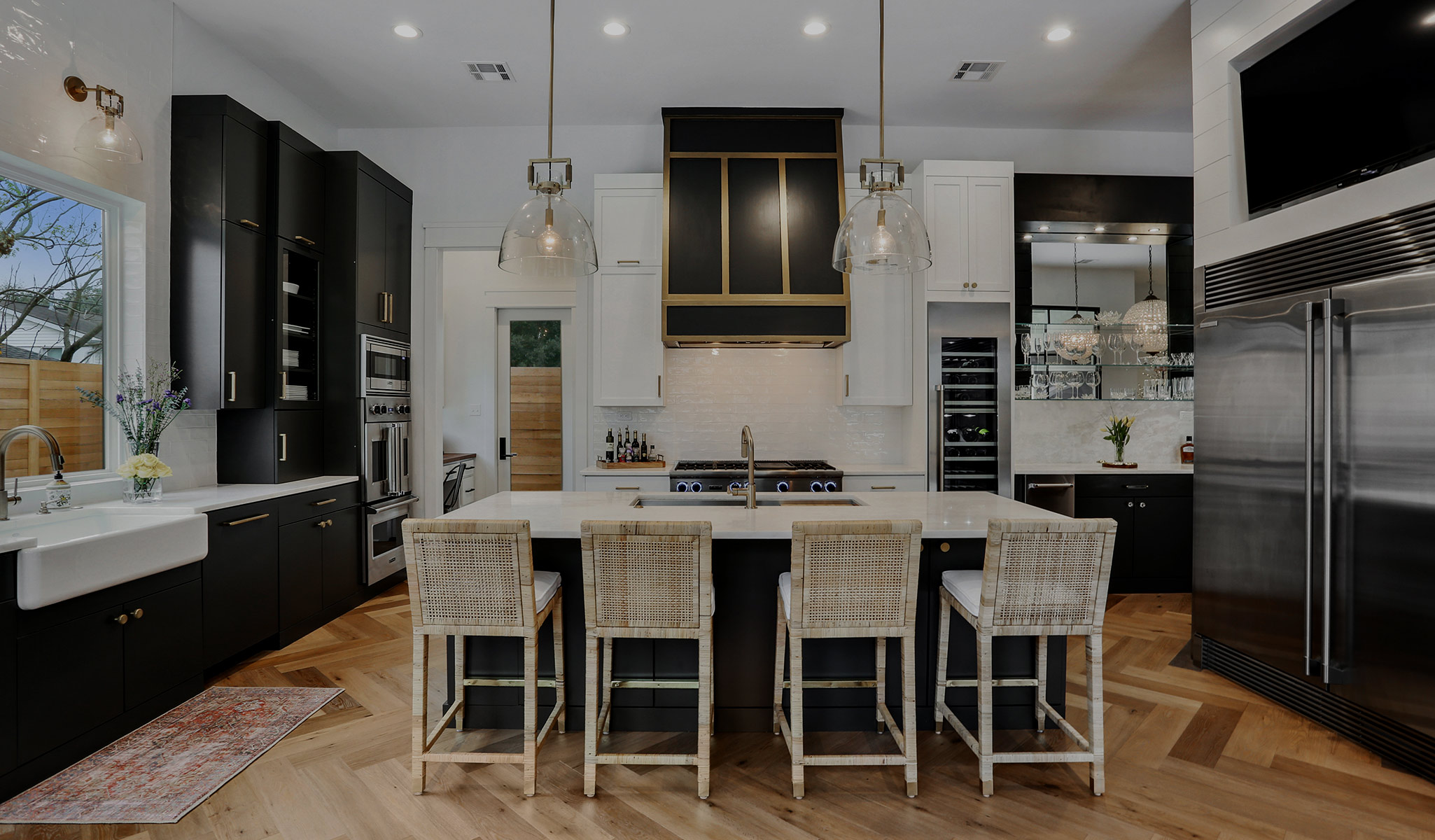Kitchen Cabinet Styles and Designs: Kitchen Cabinets Photo Gallery

Kitchen cabinets are a fundamental element of any kitchen, serving both functional and aesthetic purposes. The style and design of your cabinets can significantly impact the overall look and feel of your kitchen, reflecting your personal taste and creating a space that is both inviting and practical.
Kitchen Cabinet Styles
The style of your kitchen cabinets sets the tone for the entire space. From traditional to modern, there are numerous styles to choose from, each offering a unique aesthetic and functionality.
- Traditional: Traditional kitchen cabinets are characterized by intricate details, such as ornate carvings, raised panels, and decorative hardware. They often feature warm wood tones and classic finishes like cherry or mahogany.
- Modern: Modern kitchen cabinets prioritize clean lines, minimalist design, and a focus on functionality. They often feature sleek, flat panels, simple hardware, and neutral colors like white, black, or gray.
- Contemporary: Contemporary kitchen cabinets share similarities with modern styles but often incorporate bolder design elements, such as geometric shapes, metallic accents, and a mix of textures. They are often made from materials like stainless steel, glass, and high-gloss finishes.
- Farmhouse: Farmhouse kitchen cabinets embrace a rustic and cozy aesthetic. They often feature distressed finishes, open shelving, and hardware with a vintage feel. They are typically made from natural materials like wood and reclaimed barnwood.
- Transitional: Transitional kitchen cabinets blend elements of both traditional and modern styles. They often feature simple lines, clean details, and a mix of classic and contemporary finishes. They offer a balanced look that appeals to a wide range of tastes.
Cabinet Door Styles
Cabinet doors play a significant role in defining the overall look and feel of your kitchen cabinets. They come in a wide variety of styles, each offering a distinct aesthetic and functionality.
- Shaker: Shaker cabinet doors are known for their simple, rectangular design with a recessed center panel. They are a popular choice for their timeless appeal and versatility, blending seamlessly with various kitchen styles.
- Raised Panel: Raised panel cabinet doors feature a center panel that is raised above the surrounding frame, creating a classic and elegant look. They are often found in traditional and transitional kitchens.
- Flat Panel: Flat panel cabinet doors feature a smooth, flat surface with no raised details. They are a popular choice for modern and contemporary kitchens, where simplicity and clean lines are valued.
- Beadboard: Beadboard cabinet doors feature a series of vertical or horizontal grooves, creating a textured and visually interesting surface. They are often used in farmhouse and coastal kitchens, adding a touch of rustic charm.
Cabinet Finishes
The finish of your kitchen cabinets plays a crucial role in defining their overall appearance and durability. From painted to stained to distressed, there are various finishes to choose from, each offering a unique look and feel.
- Painted: Painted kitchen cabinets offer a wide range of color options and a smooth, easy-to-clean surface. They are a popular choice for creating a clean and modern look.
- Stained: Stained kitchen cabinets highlight the natural beauty of the wood, showcasing its grain and texture. They offer a warm and traditional look, and can be customized with a variety of stain colors.
- Distressed: Distressed kitchen cabinets feature a weathered or aged look, creating a rustic and charming aesthetic. They are often achieved by using techniques like sanding, chipping, and antiquing.
Kitchen Cabinet Layout
A well-designed kitchen cabinet layout is essential for maximizing storage space and creating a functional and efficient workspace. Consider incorporating both upper and lower cabinets, as well as islands and pantries, to create a layout that meets your specific needs.
A typical kitchen layout often includes upper cabinets above the countertop for storing dishes, glasses, and other frequently used items. Lower cabinets provide storage for pots, pans, and other heavier items. An island can offer additional countertop space, storage, and seating, while a pantry can provide ample storage for bulk items and pantry staples.
Kitchen Cabinet Design
A visual representation of a kitchen cabinet design can help you visualize the overall look and feel of your space. Consider incorporating a variety of materials and hardware to create a unique and personalized design.
Imagine a kitchen with a combination of white shaker cabinets with brushed nickel hardware, paired with a warm wood island featuring a butcher block countertop and black hardware. The upper cabinets could be complemented with open shelving for displaying decorative items and creating a more airy feel. The island could feature a combination of drawers and doors for optimal storage, while a pantry could be tucked away in a corner for storing bulk items.
Kitchen Cabinet Materials and Construction

The heart of any kitchen, cabinets are more than just storage; they define the space’s aesthetic and functionality. Choosing the right materials and construction methods for your kitchen cabinets is crucial, as it impacts durability, cost, and overall style.
Cabinet Materials
The choice of cabinet material significantly influences the kitchen’s look, feel, and budget. Each material comes with its own set of advantages and disadvantages, making it essential to weigh these factors carefully.
- Wood: The classic choice for kitchen cabinets, wood offers unmatched natural beauty, durability, and versatility. From traditional oak and cherry to contemporary maple and walnut, wood species offer a wide range of grain patterns and colors.
- Advantages:
- Durability: Wood cabinets are known for their resilience, standing up well to everyday wear and tear. They can be refinished and repaired, extending their lifespan.
- Aesthetics: The natural beauty of wood adds warmth and character to any kitchen. Wood grains and finishes create unique visual appeal.
- Versatility: Wood is highly adaptable, allowing for various styles and designs, from traditional to modern.
- Disadvantages:
- Cost: Wood is generally the most expensive cabinet material, especially for premium species like walnut and cherry.
- Maintenance: Wood requires regular cleaning and finishing to maintain its beauty and prevent damage.
- Susceptibility to Moisture: Wood can warp or crack if exposed to excessive moisture, making it crucial to use moisture-resistant finishes.
- Advantages:
- Laminate: A cost-effective and durable alternative to wood, laminate offers a wide range of colors, patterns, and textures. It is typically made by bonding a decorative paper layer to a core material, often particleboard or MDF.
- Advantages:
- Cost-effectiveness: Laminate is significantly more affordable than wood, making it a budget-friendly option.
- Durability: Laminate is resistant to scratches, stains, and moisture, making it a practical choice for high-traffic kitchens.
- Wide Variety: Laminate offers a vast selection of colors, patterns, and textures, allowing for diverse design choices.
- Disadvantages:
- Aesthetics: Laminate lacks the natural beauty and warmth of wood, often appearing less sophisticated.
- Limited Refinishing: Laminate is not easily refinished, making it difficult to update the look of the cabinets over time.
- Seams: The seams between laminate panels can be noticeable, especially in larger cabinets.
- Advantages:
- Thermofoil: Also known as PVC or vinyl-wrapped cabinets, thermofoil features a thin layer of vinyl applied to a substrate, usually MDF. This material offers a smooth, high-gloss finish that is resistant to moisture and scratches.
- Advantages:
- Moisture Resistance: Thermofoil is highly resistant to moisture, making it suitable for humid environments.
- Easy Maintenance: The smooth, non-porous surface is easy to clean and maintain, resisting stains and fingerprints.
- Cost-effectiveness: Thermofoil is generally more affordable than wood, offering a balance between cost and durability.
- Disadvantages:
- Limited Styles: Thermofoil offers fewer design options than wood or laminate, typically featuring smooth, high-gloss finishes.
- Susceptibility to Dents: While scratch-resistant, thermofoil can be susceptible to dents, especially in high-traffic areas.
- Synthetic Look: Thermofoil lacks the natural beauty of wood, sometimes appearing less sophisticated.
- Advantages:
Cabinet Construction, Kitchen cabinets photo gallery
The construction method employed for kitchen cabinets significantly impacts their durability and overall quality. Two primary methods are commonly used:
- Frame and Face Frame: This traditional construction method involves building a frame around each cabinet box, with a face frame attached to the front. The face frame provides structural support and adds a decorative element.
- Advantages:
- Durability: Frame and face frame construction provides excellent structural integrity, making the cabinets sturdy and long-lasting.
- Traditional Aesthetics: The face frame adds a classic, traditional look to the cabinets.
- Easy to Repair: Damaged components can be easily replaced, extending the lifespan of the cabinets.
- Disadvantages:
- Cost: Frame and face frame construction is generally more expensive than other methods due to the additional materials and labor involved.
- Limited Customization: The face frame can limit customization options, particularly for contemporary designs.
- Visual Bulk: The face frame adds visual bulk to the cabinets, which may not be desirable in smaller kitchens.
- Advantages:
- Frameless: Also known as “European” style, frameless construction eliminates the face frame, relying on the cabinet box itself for structural support. This creates a sleek, minimalist look with more usable interior space.
- Advantages:
- Sleek Aesthetics: Frameless cabinets offer a modern, clean look with minimal visual bulk.
- Maximum Storage: The absence of a face frame provides more usable interior space.
- Cost-effectiveness: Frameless construction typically uses less material and labor, making it more affordable than frame and face frame.
- Disadvantages:
- Less Durable: Frameless cabinets may not be as durable as frame and face frame, especially in high-traffic areas.
- Limited Customization: The lack of a face frame limits customization options for traditional designs.
- More Difficult to Repair: Damaged components may be more challenging to replace in frameless cabinets.
- Advantages:
Selecting the Right Materials and Construction
Choosing the right cabinet materials and construction methods depends on several factors:
- Budget: Set a realistic budget and research the cost of different materials and construction methods.
- Kitchen Style: Consider the overall style of your kitchen and choose materials and construction that complement the design.
- Usage: High-traffic kitchens may require more durable materials and construction methods than low-traffic areas.
- Maintenance: Factor in the time and effort required to maintain different materials and finishes.
Comparing Cabinet Materials
The following table summarizes the key properties, pros, and cons of different cabinet materials:
| Material | Properties | Pros | Cons | Wood | Natural, durable, versatile | Beauty, durability, refinishable | Costly, requires maintenance, susceptible to moisture | Laminate | Cost-effective, durable, wide variety | Affordable, durable, wide selection | Synthetic look, limited refinishing, noticeable seams | Thermofoil | Moisture-resistant, easy to clean | Moisture resistance, easy maintenance, cost-effective | Limited styles, susceptible to dents, synthetic look |
|---|
Kitchen Cabinet Functionality and Organization

Kitchen cabinets are the backbone of any functional kitchen, providing essential storage space for everything from cookware and dishes to pantry staples and appliances. Maximizing their functionality and organization can transform your kitchen from a cluttered space into a streamlined and efficient culinary haven.
Kitchen Cabinet Hardware
The choice of kitchen cabinet hardware goes beyond aesthetics; it plays a crucial role in functionality and ease of use.
- Hinges: Hinges are the unsung heroes of kitchen cabinets, allowing doors to open and close smoothly. Modern hinges offer a range of features, including soft-close mechanisms that prevent slamming and self-closing options that ensure doors always stay shut.
- Pulls: Pulls provide a comfortable grip for opening drawers and cabinet doors. They come in various styles, materials, and sizes, allowing for customization to match the overall kitchen design.
- Knobs: Knobs are a classic choice for cabinet hardware, offering a simple and elegant design. They are typically smaller than pulls and can be found in a wide array of materials, from polished brass to rustic wood.
Innovative Storage Solutions
Beyond traditional shelves and drawers, kitchen cabinets can be enhanced with innovative storage solutions that maximize space and optimize organization.
- Pull-out Shelves: These shelves slide out smoothly, making it easy to access items stored in the back of the cabinet. They are particularly useful for storing heavy items like pots and pans, as they distribute weight evenly and prevent strain on the cabinet structure.
- Lazy Susans: Lazy Susans are rotating platforms that allow for easy access to items stored in corner cabinets. They eliminate the need to reach into the back of the cabinet, making it easier to find what you need.
- Drawer Dividers: Drawer dividers create compartments within drawers, allowing for organized storage of utensils, silverware, and other small items. They prevent clutter and make it easier to find what you need quickly.
Kitchen Cabinet Layout Design
A well-designed kitchen cabinet layout is essential for maximizing storage space and functionality. Consider the following factors:
- Work Triangle: The work triangle, a concept in kitchen design, connects the sink, stovetop, and refrigerator. Optimizing the placement of cabinets within the work triangle ensures a smooth workflow and efficient use of space.
- Cabinet Depth: Cabinet depth is an important consideration, especially in smaller kitchens. Shallow cabinets can save space, while deeper cabinets offer greater storage capacity.
- Cabinet Height: Cabinet height should be tailored to the individual’s height and reach. Adjustable shelves and pull-out drawers can accommodate varying heights and make it easier to access items.
Organizing Kitchen Cabinets
Organizing kitchen cabinets is a crucial step in creating a functional and efficient kitchen.
- Declutter: Before organizing, take stock of what you have and declutter by removing items you no longer use or need.
- Categorize: Group similar items together, such as cookware, bakeware, dishes, and pantry staples.
- Vertical Storage: Utilize vertical space by stacking items, using tiered organizers, and incorporating shelves.
- Clear Containers: Store items in clear containers to easily see what’s inside and prevent clutter.
- Label Everything: Label containers and shelves to quickly find what you need.
Kitchen Cabinet Organization System
Visual Representation:
[Image Description: A visual representation of a kitchen cabinet organization system. The cabinet is divided into three sections. The top section is for storing infrequently used items, such as seasonal dishes or holiday decorations. The middle section is for storing everyday items, such as cookware, bakeware, and serving dishes. The bottom section is for storing pantry staples, such as canned goods, dry goods, and snacks. The cabinet is also equipped with pull-out shelves, lazy Susans, and drawer dividers. The compartments and storage solutions are labeled to make it easy to find what you need.]
A kitchen cabinets photo gallery can inspire your next renovation project, showcasing diverse styles and layouts. But beyond the cabinets themselves, consider the finishing touches that elevate your kitchen’s aesthetic, like signs above kitchen cabinets. These personalized touches add a touch of whimsy or practicality, complementing the overall design and creating a truly unique space.
So, while you’re browsing those photo galleries, don’t forget to envision the final touches that will make your kitchen truly your own.
A kitchen cabinets photo gallery can be a valuable resource for inspiration, showcasing diverse styles and materials. If you’re drawn to the rich, warm tones and timeless elegance of wood, consider browsing a collection of walnut kitchen cabinets photos.
These photos can help you visualize the impact of walnut cabinets in your own kitchen, from sleek modern designs to traditional farmhouse styles. Ultimately, a kitchen cabinets photo gallery offers a visual journey, allowing you to discover the perfect fit for your space and taste.
